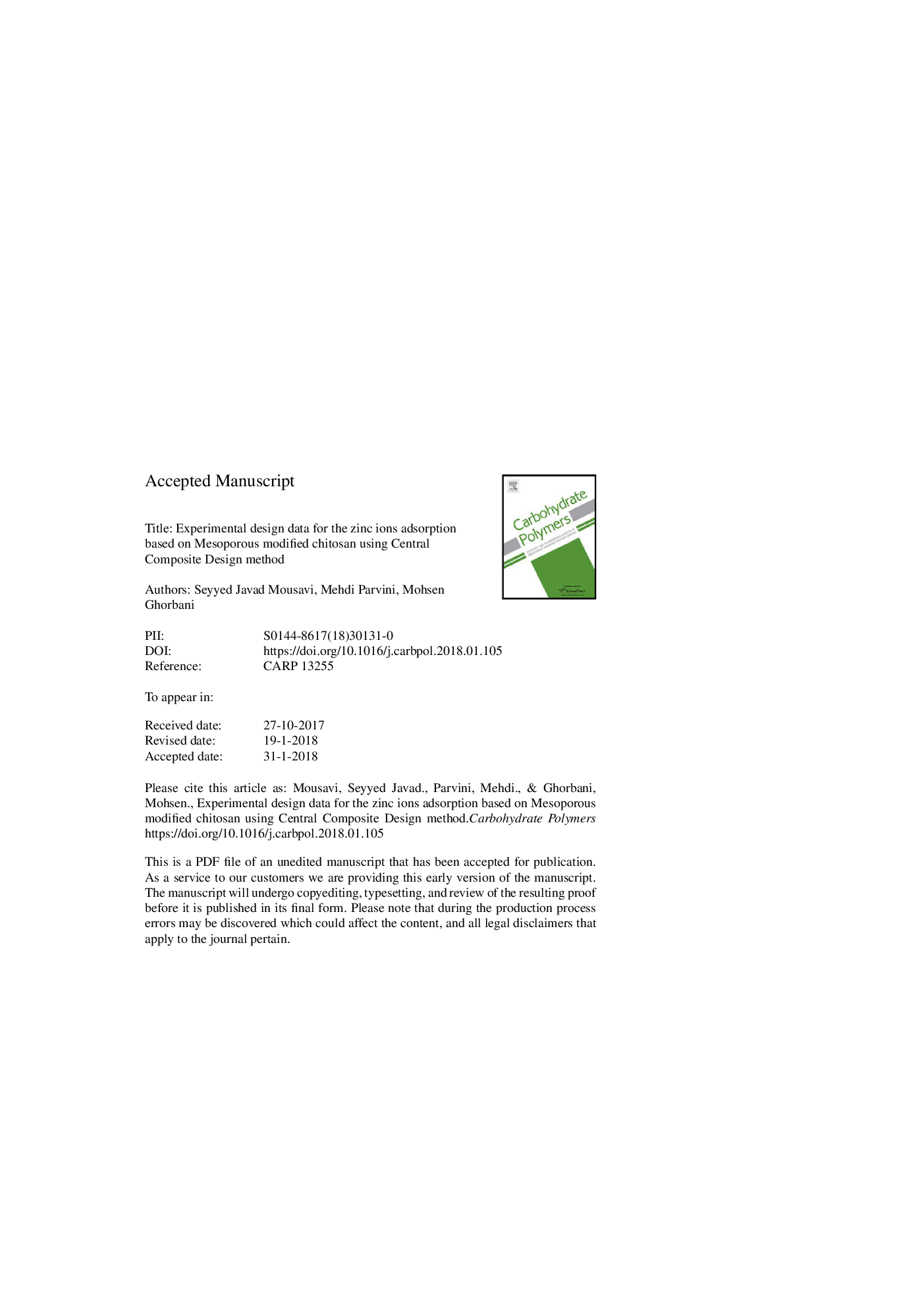| Article ID | Journal | Published Year | Pages | File Type |
|---|---|---|---|---|
| 7783374 | Carbohydrate Polymers | 2018 | 47 Pages |
Abstract
In the present study, new generation of silica-based mesoporous adsorbents were introduced for the removal of heavy metals with the aim of developing new adsorption technologies in water treatment. The magnetic nanoadsorbent, prepared by modification of SBA-15 with [3-(2-Aminoethylamino) propyl] trimethoxysilane (AEAPTMS)-functionalized chitosan, was applied for the removal of Zn2+ from aqueous solution. The synthesized Fe2O3@SBA-15-CS-AEAPTMS nanoadsorbent was thoroughly characterized using XRD, TEM, FTIR and BET analysis. In order to determine the optimum condition of Zn2+ adsorption on Fe2O3@SBA-15-CS-AEAPTMS (3â¯ml), the experiments were performed based on central composite design in a response surface methodology method. The obtained results were further studied using adsorption kinetic, isotherm and thermodynamic relations which revealed that Zn2+ adsorption was spontaneous and endothermic with enhanced adsorption efficiency achieved for higher contents of functional groups. In addition, according to the results, the adsorption process was best conformed to Langmuir isotherm (with R2â¯>â¯0.99 and qmaxâ¯=â¯107.21â¯mgâ¯gâ1) and pseudo second-order kinetic model (with R2â¯>â¯0.999). The values of standard entropy (DS°) and activation energy (Ea) reduced as the initial concentration was increased and the dominant mechanism was found to be chemisorption.
Related Topics
Physical Sciences and Engineering
Chemistry
Organic Chemistry
Authors
Seyyed Javad Mousavi, Mehdi Parvini, Mohsen Ghorbani,
